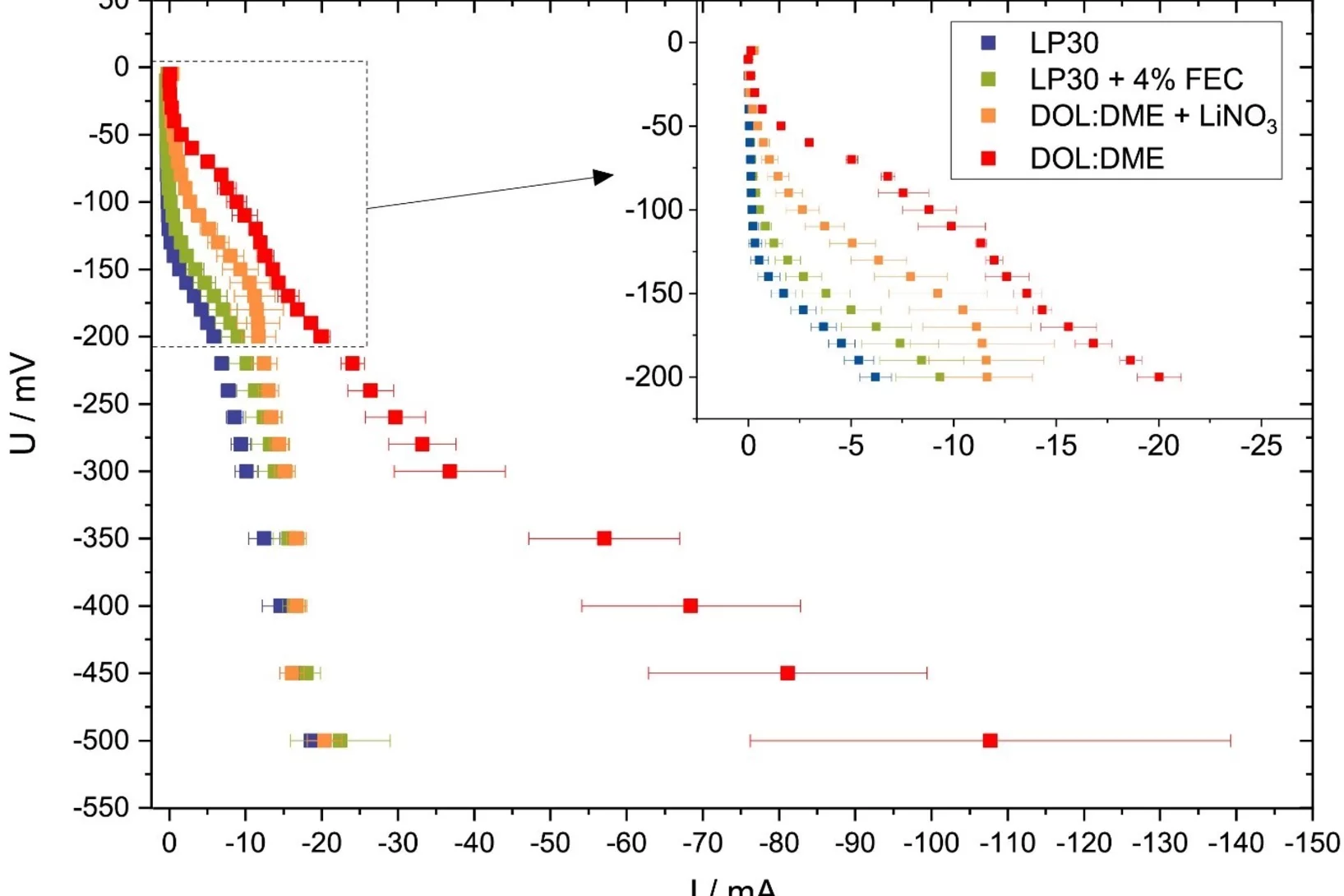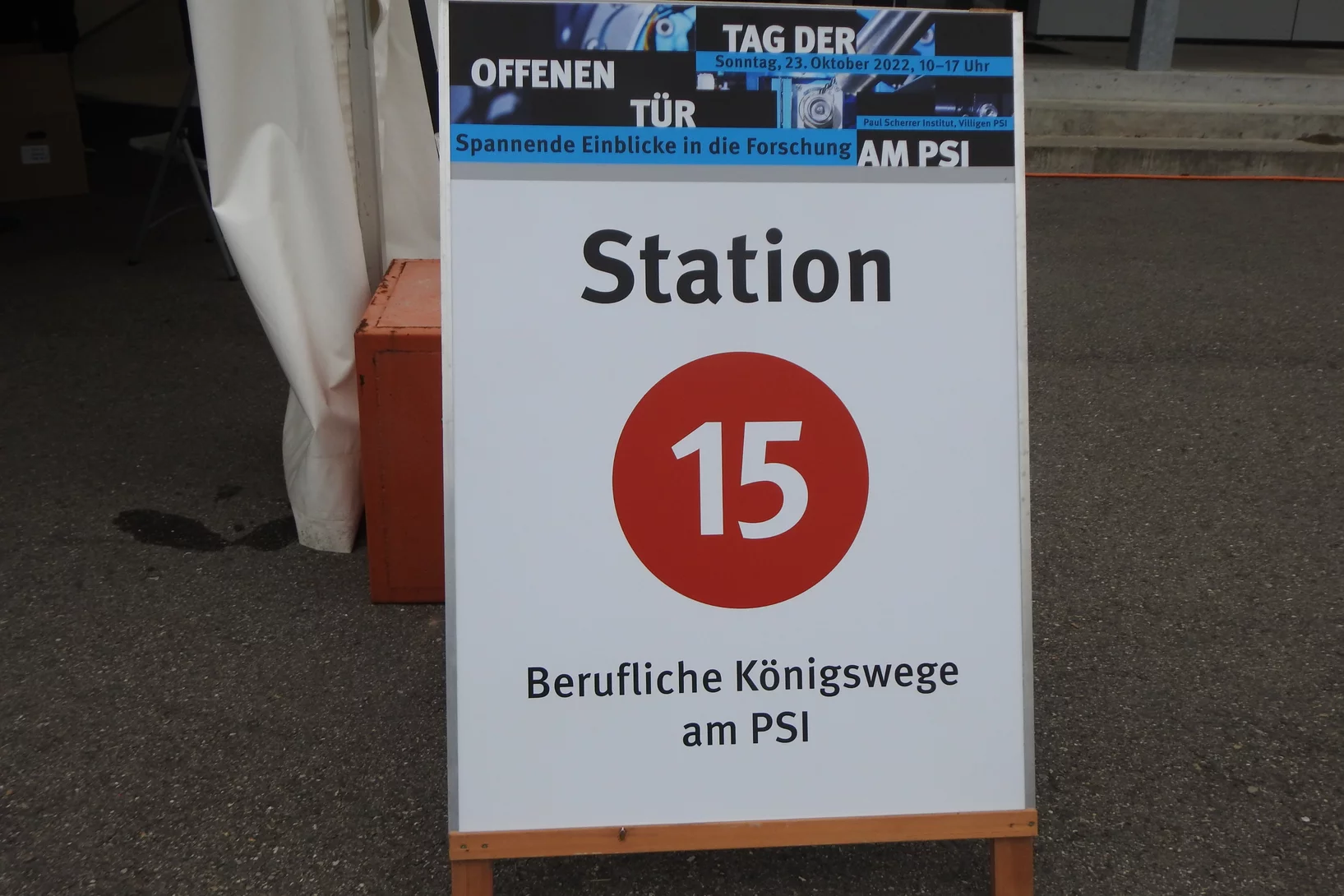Am Paul Scherrer Institut suchen Forschende nach Antworten auf die fundamentale Frage nach den Grundstrukturen der Materie und den fundamentalen Funktionsprinzipien in der Natur. Sie untersuchen Aufbau und Eigenschaften der Elementarteilchen – der kleinsten Bausteine der Materie – oder gehen der Frage nach, wie biologische Moleküle aufgebaut sind und wie sie ihre Funktion erfüllen. Das so gewonnene Wissen öffnet neue Lösungsansätze in Wissenschaft, Medizin oder Technologie.
Mehr dazu unter Überblick Grundlagen der Natur
Neue Materialien für den Computer der Zukunft
Forschende identifizieren und untersuchen Materialverbindungen, deren spezielle Eigenschaften neuartige Mikrochips möglich machen könnten.
ANAXAM: Im Dienst der Industrie
Angewandte Materialanalytik mit Neutronen- und Synchrotronstrahlung: Bereits seit über zweieinhalb Jahren ist das Technologietransferzentrum ANAXAM im Einsatz für die Industrie und hat weit mehr als 70 erfolgreiche Kundenprojekte mit Industrie- und Forschungspartnern aus aller Welt abgeschlossen – Zeit für einen Rückblick.
Magnetic and crystal structure of the antiferromagnetic skyrmion candidate GdSb0.71Te1.22
GdSb0.46Te1.48, a nonsymmorphic Dirac semimetal with Dirac nodes at the Fermi level, has a rich magnetic phase diagram with one of the phases predicted to be an antiferromagnetic skyrmion state. In the current work, we investigate GdSb0.71Te1.22 through bulk magnetization measurements, single-crystal, and powder synchrotron X-ray diffraction, as well as single-crystal hot-neutron diffraction. We resolve a weak orthorhombic distortion with respect to the tetragonal structure and charge density wave (CDW) satellites due to incommensurate modulations of the crystal structure. At 2 K the magnetic structure is modulated with two propagation vectors, kI = (0.45 0 0.45) and kII = (0.4 0 0), with all their arms visible. While kI persists up to the transition to the paramagnetic state at TN = 11.9 K, kII disappears above an intermediate magnetic transition at T1 = 5 K. Whereas magnetic field applied along the c-axis has only a weak effect on the intensity of antiferromagnetic reflections, it is effective in inducing an additional ferromagnetic component on Gd atoms. We refine possible magnetic structures of GdSb0.71Te1.22 and discuss the possibility of hosting magnetic textures with non-trivial 3D+ 2 topologies in the GdSb1−xTe1+x series.
Wie du bei der Arbeit glücklicher bist
Kennst du dieses Gefühl, dass du im Labor sitzt und dich zu Tode langweilst, weil du die gleiche Messung gefühlt zum Tausendsten Mal wiederholst, während du dich fragst wozu du 5+ Jahre studiert hast? Oder das Gefühl, wenn du dir unglaublich Mühe gegeben und halbe Nächste durchgearbeitet hast, um ein Manuskript rechtzeitig fertig zu haben – nur damit es völlig rot oder auch gar nicht vom Betreuer zurückkommt? Oder der Reviewer (der offensichtlich keine Ahnung hat von deinem Fachgebiet) behauptet, deine Studie sei nicht neu oder originell genug um publiziert zu werden? Wenn dann noch ein Instrument gerade vor oder während der letzten Messung ausfällt, oder der PC nach ewigen Berechnungen gerade in dem Moment abstürzt, wo das Modell endlich fertig war, macht dies das Leben als Wissenschaftler*in unglaublich frustrierend. Dieser Blog-Eintrag hilft dir, diese Frustration loszuwerden, und glücklicher mit und bei deiner Arbeit zu sein.
Thermal cycling during 3D laser printing
High-speed in situ X-ray diffraction is used to measure temperature profiles and cooling rates during 3D printing of a a Ti-6Al-4V single-track wall.
A unique environment for research on highly radioactive materials
PSI has a unique (worldwide) environment for the investigation of highly radioactive / toxic materials:
> Materials (different fuel types, very high burn-up, different cladding materials, materials activated in SINQ).
> The hot lab with advanced tools for microsample analysis and preparation.
> The large-scale equipment for advanced material analysis.
This unique combination at PSI allows us to meet the needs of our industrial partners to improve plant safety / efficiency, up to fundamental research.
The quantitative distribution of fission products over the cross-section of a pellet with a shielded electron probe microanalyzer (EPMA) used for verification analysis of the material behavior to validate the model. In this context, Xe behavior during transients/failure (LOCA, RIA) is an important safety parameter that can’t be measured with the EPMA at the periphery. Microstructural EBSD investigations on a microsample extend the information horizon, which is deepened at the microXAS beamline by detailed X-ray analyses.
Appointment of Thomas Lippert as new head of the Laboratory for Multiscale Materials Experiments (LMX)
Starting 1. December 2022, Prof. Dr. Dr. Thomas Lippert will be the new head of the Laboratory for Multiscale Materials Experiments (LMX). He follows Prof. Dr. Laura Heyderman, our first laboratory head who successfully formed and established the LMX in the PSI landscape as a Centre of Materials.
Versatile and Fast Methodology for Evaluation of Metallic Lithium Negative Battery Electrodes
Evaluating potential electrolyte candidates is typically a lengthy procedure requiring long-term cycling experiments. To speed this process up, we have investigated potentiostatic lithium plating as a potential method for fast electrolyte suitability investigation. The applications of this methodology is not limited to liquid electrolytes, - effects of solid-state electrolytes, coatings, and other modifications can be readily assessed.
Making sense of the muon’s misdemeanours
An exotic atom called muonium could explain why muons won’t stick to the rules, believe researchers using the Swiss Muon Source at Paul Scherrer Institute PSI.
First pump-probe SFX commissioning beamtime at Cristallina
Professor Przemek Nogly and his team from Jagiellonian University Kraków were kind enough to give their time and samples to assist the Cristallina-MX team in the commissioning of the SwissMX fixed-target endstation for pump-probe experiments.
The Laboratory for Neutron and Muon Instruments visits FRM II neutron research facility
Recently, the staff of the PSI’s Laboratory for Neutron and Muon Instrumentation (LIN) visited our colleagues at MLZ to learn more about the FRM II reactor and its instrumentation, as well as to discuss current and future joint projects. LIN staff was greeted with Bavarian hospitality in the form of “Weisswurst Frühstück” and then enjoyed a full tour of the facility and many fruitful discussions.
Consortium led by LMS wins funding to establish ORD practices
A consortium led by Dr. Giovanni Pizzi, Group leader of the “Materials Software and Data” group in the Laboratory for Materials Simulations, has won funding of almost CHF1.3 million for a three-year project dubbed PREMISE: “Open and reproducible materials science research.”
Zukunftstag 2022
129 Kinder besuchten uns am Nationalen Zukunftstag!
PSI Spin-off leistet Beitrag zu Systemen für effektive Wirkstoffverteilung
Eine erfolgreiche Zusammenarbeit zwischen unserem Spin-off Excelsus Structural Solutions, Novartis Pharma Basel, dem Institut für Kristallographie des CNR (Centro Nazionale Ricerche) in Bari, Italien, und der Universität La Sapienza in Rom führte zur Entwicklung eines einfachen theoretischen Modells, welches die Struktur und Funktionalität eines sogenannten «VitE-TPGS Drug-Delivery-Systems (DDS)» aus Mizellen mit Abmessungen im Nanobereich beschreibt.
Dies kann eine wichtige Rolle bei der effizienten Verteilung eines Medikaments im Körper spielen und der Pharma-Industrie neue Möglichkeiten eröffnen.
Upgraded pixel detector back in action at CERN
Built at Paul Scherrer Institute, the detector forms the heart of the CMS experiment. It is producing data again following an upgrade during the LHC shutdown.
Single-domain stripe order in a high-temperature superconductor
The coupling of spin, charge and lattice degrees of freedom results in the emergence of novel states of matter across many classes of strongly correlated electron materials. A model example is unconventional superconductivity, which is widely believed to arise from the coupling of electrons via spin excitations. In cuprate high-temperature superconductors, the interplay of charge and spin degrees of freedom is also reflected in a zoo of charge and spin- density wave orders that are intertwined with superconductivity ...
Dancing molecules
When cycloalkanes are enclosed in a nanometer-sized pore, they adapt their shape - similar to the induced fit concept described in #biochemistry. The molecules do not all behave in the same way and surprisingly start to move when there is a lack of space at 5K.
Energiesicherheit
Wie kann die Schweiz die Energiewende schaffen? Antworten liefern Forschende des PSI mit einem einzigartigen Computermodell.
Perspective on muon-spin rotation/relaxation under hydrostatic pressure
Pressure, together with temperature, electric, and magnetic fields, alters the system and allows for the investigation of the fundamental prop- erties of matter. Under applied pressure, the interatomic distances shrink, which modifies the interactions between atoms and may lead to the appearance of new (sometimes exotic) physical properties, such as pressure-induced phase transitions; quantum critical points; new structural, magnetic, and/or superconducting states; and changes of the temperature evolution and symmetry of the order parameters...
Der grüne Daumen der Automatiker*innen
Überall standen bepflanzte Hochbeete im PSI Areal. Was hat es mit den «Greenboxen» auf sich?
Die Automatikergruppe erzählt von ihren Gärtnerarbeiten.
Nanotechnology group is welcoming Kevin Hofhuis
Starting in Novemeber 2022, Dr. Kevin Anthony Hofhuis joined the Nanotechnology group as an E-beam Lithography Scientist.
Welcome to the cleanroom team, Kevin!
"The skills I had acquired during my PhD were 1 to 1 transferrable in my role as a Development Scientist"
Susan Taylor completed her PhD at the Laboratory for Electrochemistry at the Paul Scherrer Institute in 2017. Today she works as a Senior Analyst at S&P Global and reflects with us on her PhD years at PSI.
Waiting for the repository
How computer simulations are helping ensuring a safe and efficient transfer of used nuclear fuel from temporary dry storage to its final resting place deep underground.
Tag der offenen Tür 2022
Station 15: Berufliche Königswege am PSI
Platinum-Iron(II) Oxide Sites Directly Responsible for Preferential Carbon Monoxide Oxidation at Ambient Temperature: An Operando X-ray Absorption Spectroscopy Study
Operando X-ray absorption spectroscopy revealed a linear correlation between the amount of oxidic Fe2+ and the ambient temperature activity of Pt−FeOx preferential carbon monoxide oxidation catalysts. The hydrogen prereduction temperature and pressure determines the amount of active Fe2+ sites for alumina- and silica-supported Pt−Fe catalysts. Catalyst deactivation is linked with the oxidation of these sites.
SynFuel Initiative Meeting
On November 7th, the SynFuel Initiative project meeting between PSI and Empa scientists took place. This was the first time the scientists involved in the collaboration met in person as this was not possible before due to the pandemic. The scientists presented their work on the sub-projects of the SynFuel Initiative to each other and had an exchange. The day ended with a tour of the SLS and GanyMeth.
Weiterbildung Kita Kiwi
Weiterbildung Kita Kiwi
Am 3. September durfte das Team der Kita Kiwi an einer tollen Weiterbildung zum Thema Vielfalt in der Kita teilnehmen.
Dort durften wir unseren Wissenshorizont erweitern und konnten Neues in unseren Alltag mitnehmen.
Von Fusionsreaktoren, Brennstoffzellen und Konservendosen
Das Technologietransferzentrum ANAXAM erleichtert den Zugang zur Materialanalytik am PSI.
Kinderuniversität Zürich visits PSI
On November 5, 2022, the Laboratory for Neutron and Muon Instrumentation in collaboration with the Correlated Quantum Matter group at the University of Zurich carried out the workshop “Wellenspiele” (German for “Playing with Waves”) for the Kinderuniversität Zürich (“Children’s University Zurich”) for the first time.
Wie funktioniert eine Karriereberatung?
‘Was machst du jetzt mit mir?’ oder ‘ich wusste gar nicht recht, was mich hier erwartet’ sind Sätze, die ich oft zu Beginn einer Beratungsstunde höre. Nicht zu wissen worauf wir uns eingelassen haben, macht Angst. Das kann sogar so weit gehen, dass wir uns sagen ‘meine Fragen sind gar nicht so wichtig, ich brauche keine Beratung’. Ich bewundere alle, die den Mut haben, trotz dieser Unsicherheit eine Beratung in Anspruch zu nehmen. Für alle, die noch im Stillen hin und her überlegen, werfen wir hier einen Blick in den Beratungsraum.






























